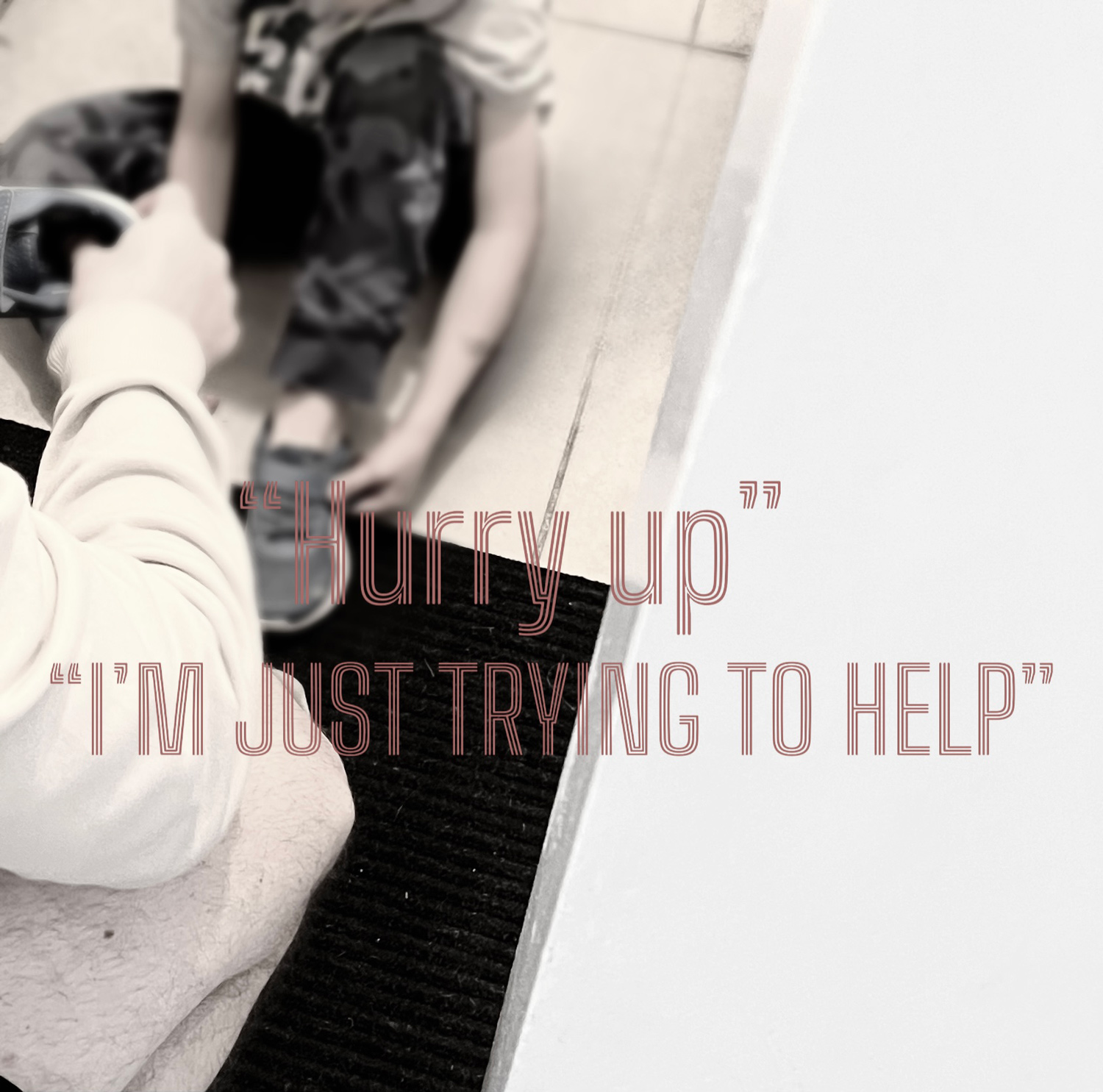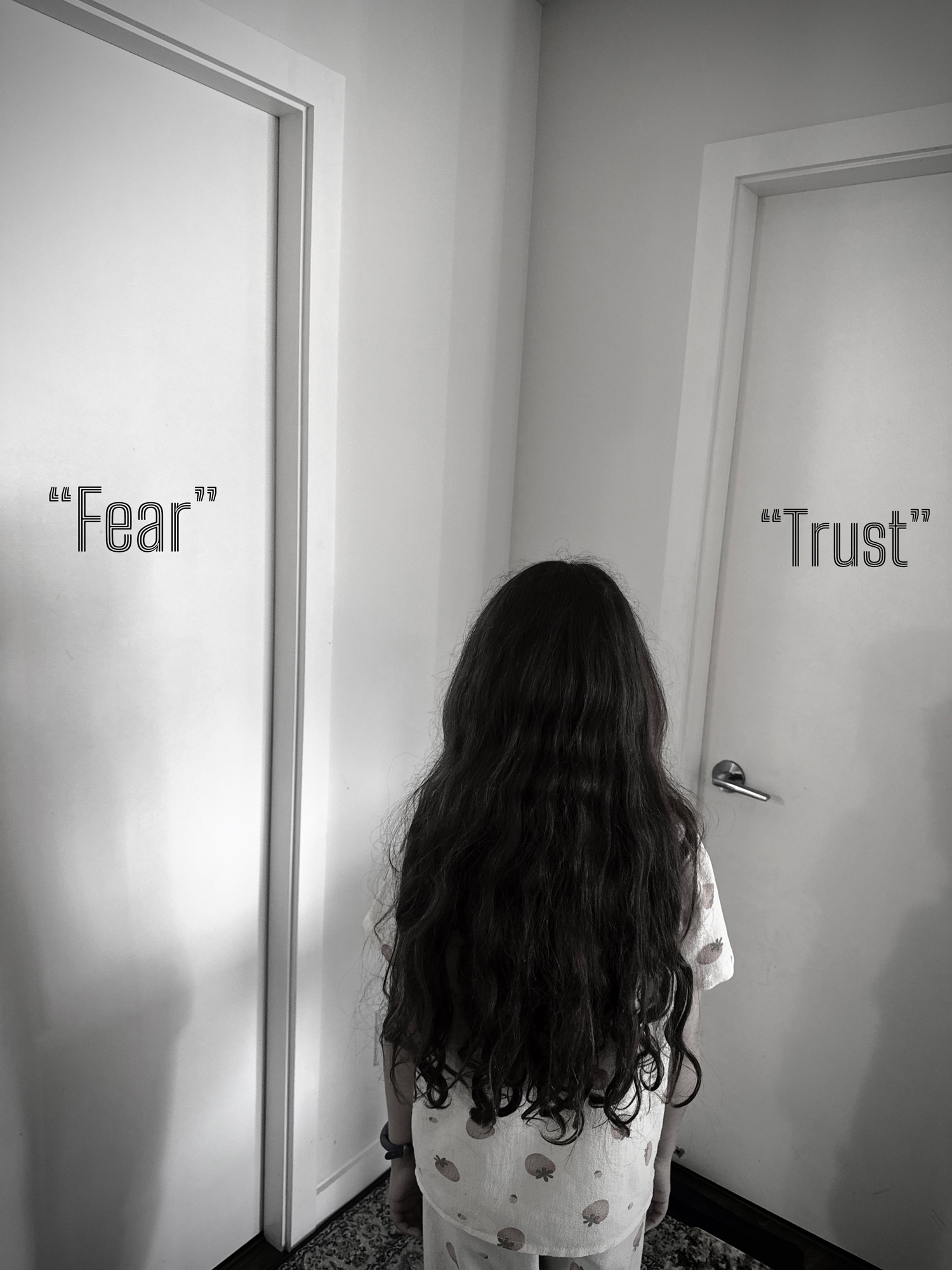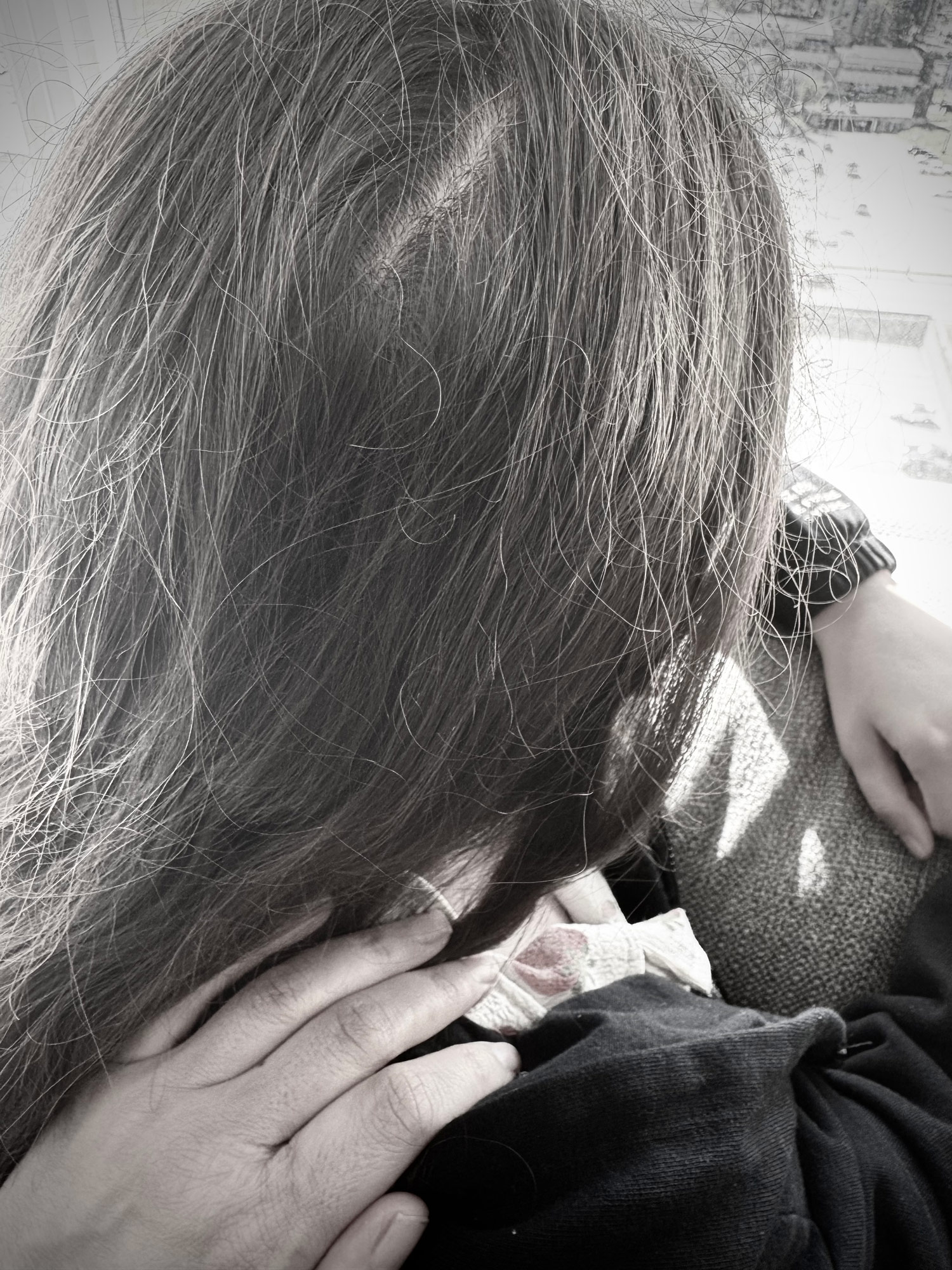
Tara Darvishi
Tara Darvishi is completing her Bachelor of Arts in Psychology at Capilano University. Alongside her studies, she is completing her practicum placement at the North Shore Neighbourhood House Teen Club, where she supports youth with diverse emotional and developmental needs. Tara’s lived experience, academic background, and deep desire to support others have shaped her goal of pursuing a Master’s degree in Clinical Counselling.
Growing up, I was raised in an authoritarian household. I was taught obedience through fear and corporal punishment. Tone and word choice were used as weapons of shame and correction. While I was raised to be respectful and well mannered, this emotional toll lingered into my adulthood. As an adult, I’m now forced to navigate anxiety, emotional regulation, and my low self-esteem. This is rooted in the way I was spoken to as well as what was said. This lived experience sparked a passion in me to learn and understand how parental tone and word choice can impact children, and how we can break cycles of generational trauma.
Gentle parenting has become a major recent topic being discussed by parents today. Parental communication such as a parent’s tone and word choice with their children plays a significant role in shaping a child’s emotional and cognitive development long-term, because they influence emotional regulation, self-esteem, and the internal experiences children carry into adulthood. Although some may argue that children need strict discipline to build resilience and respect, research and lived experience suggest that connection-based communication fosters greater emotional strength and long-term well-being. This paper will investigate how parental tone and word choice significantly impacts a child’s long-term development, incorporating insights from a social worker, psychological research, and my own lived experience to provide guidance for both future parents and current parents seeking to shift from authoritarian to gentle parenting styles, breaking generational cycles of harmful communication.
The Power of Tone and Word Choice
Tone, whether gentle or harsh, can communicate much more than just what is simply being said. A calm or kind voice signals safety, love, and connection to a child. In contrast, a harsh voice can make a child feel scared or stressed. Words, likewise, can shape how children see themselves and the world around them. These small, yet repeated interactions eventually become part of the child’s internal world. Similarly, words also are so powerful that children absorb the words and begin to believe those words define them because that’s what their parents are saying. For example, growing up, when I expressed my feelings, adults around me responded with, “you’re so dramatic,” and “you’re so sensitive”. After hearing those words so much I now have those words following me everywhere, I eventually started to believe those words were true, which has resulted in me not being able to express my feelings in my relationships as an adult, something I have been working on.
According to Koru Psychology, the way parents communicate, such as their tone and word choice, can significantly shape a child’s development leading to the development of anxiety (Buzanko, 2023). Children learn how to handle their emotions better when they’re spoken to in a kind tone and responded with care. Catherine S. Tamis-LeMonda (2022) supports this by explaining that a calm, supportive tone fosters emotional safety and self-regulation in children, whereas harsh or angry tones delay a child’s development of emotional regulation, leading to the child feeling more stressed and in consistent intense situations lead to a chain of serious mental health problems. Similarly, Mortazavizadeh et al. (2022), found that when parents were emotionally responsive and sensitive, children were better able to develop the emotional tools needed to navigate stress and regulate their emotions effectively.
Pediatric psychologist Mona Delahooke also supports this in her book Brain-Body Parenting, where she explains how our emotional tone is picked up by the brain before we get the chance to understand what is being said. Therefore, when a message that is meant to be supportive is initiated with a frustrated or harsh tone it can still cause stress. Therefore, if a parent is saying something supportive but it gets communicated in a frustrated or harsh tone, the child may still interpret the message as threatening, therefore the child will still feel stressed.

Figure 1. Even supportive phrases during regular routines, when spoken in a harsh or frustrated tone, can negatively impact the child.
Children tend to be open and respond better to calm tones rather than harsh tones. As part of my research, I interviewed Lilaini, a social worker who supports children and families. She explained, “Children in general, typically respond with easiness to calm tones than to the harsh ones. A child when approached harshly tends to respond either in a defensive or defiant way” (Lilaini, personal communication, 2025). These responses shown by children aren’t just behavioural, but they are physiological. As Delahooke (2022) notes, emotional tone has a direct impact on the nervous system.
In a personal video shared by a mother on the social media app Tiktok, she reflects on her past living in a household with harsh tones and words and the impact it has had on her adulthood. She explains how these past experiences have impacted her self-esteem, confidence, and ultimately has made her undermine her own capabilities and finds herself in a fight or flight mode over the smallest of problems in her adulthood. She shows in a raw video how she responds to her child making a small mistake of cracking an egg on the ground, by saying, “Oh no, that’s okay. Mistakes happen, we just need to clean up. What do we do with our eggs next time, so we don’t drop it?” in a very calm and neutral tone. In the same video we see the child stress free, and immediately understand her own mistake, and correct herself without having her mother to correct her. As Delahooke (2022) explains, these exact moments are perfect examples of co-regulation. The mother in the video responding to her child with calmness helps settle the child’s nervous system and helps build that emotional safety. Now with the mother breaking that generational cycle she explained, these micro interactions she has with her children is what helped her build confidence and a strong connection with her children. This is a perfect example of how to break generational patterns, through self-awareness, consistent, and supportive responses. The Key is support. Parenting is not about perfection, it’s about being emotionally present, supportive, and understanding.
Long-Term Impacts of Negative Communication
Negative parental communication can have long lasting effects that can carry into adulthood. Research by Lanjekar et al (2022), shows this when he links harsh, aggressive, and intrusive parenting styles to children developing internalizing and externalizing symptoms, and that these symptoms can lead to long-term struggles in their relationships with friends and emotional regulation. When parents communicate in negative or dismissive tones, the child is more likely to experience serious emotional problems such as low self-esteem, depression, and anxiety (Integris Health, 2021). A form of negative tone is yelling, even the volume of a parent’s voice can have an impact, you may think yelling here and there isn’t horrible, it’s human nature. However, Ford (2025), further explains that yelling, even briefly can cause stress in the brain, making it more difficult for children to manage their emotions and think clearly over time. These experiences certainly do not fade rather they can significantly impact children’s ability to regulate emotions later in life let alone process them (BetterHelp Editorial Team, 2024).

Figure 2A. Crumpled paper with harsh phrases, symbolizing how repeated negative communication can leave lasting scars.
Harsh tones and words may seem small in the moment, but research finds that the experiences children face can cause them to internalize negative self-concepts about themselves. While society tends to recognize the long-term impacts pf psychical abuse, many tend to overlook the equally damaging impacts of emotional abuse. Children’s self-esteem can be deeply impacted by a parents harsh or dismissive tone. For example, by correcting a child via shame or negative tones when they are overwhelmed or not behaving the way you want them too sends the child a message that the child chose to behave poorly which in turn can affect the child’s self-esteem (Delahooke, 2022). Lilaini, further explained that children who are raised in high-conflict homes tend to develop self-doubt and have difficulties trusting others, especially when exposed to aggressive or angry tones. She emphasized that children would carry these early patterns into their adolescence impacting their future relationships and emotional safety, often resulting in the child either shutting down emotionally or even repeating the same harsh patterns in their future relationships.
Low self-esteem isn’t just temporary, it can impact all areas of someone’s life, even into adulthood. It can make it harder for them to speak up for themselves, making decisions, and build any sort of healthy relationships in the future. Low self-esteem causes deep self-doubt. Therefore, causing one to constantly question their worth or second guess themselves. When children consistently get dismissed or made to feel like they can’t express their emotions, they’ll learn to stay silent to avoid any more hurt. Eventually, this can lead to them in their adulthood to bottle up their emotions, which can negatively impact their relationships later in life (Lanjekar et al., 2022; BetterHelp Editorial Team, 2024).
Yelling not only teaches children that being loud is the only way to be heard and seen, but it also teaches them that in order for them to listen and respond they need to be yelled at. It also teaches them that conflict is solved through power not understanding and speaking calmly. Therefore, yelling can affect how a child views themselves but also how they should approach future conflicts in relationships. In addition to this, this type of communication can also leave a child with deep emotional trauma such as anxiety, low self-esteem, withdrawal, or aggressive behaviour (Ford, 2025). Teaching them in the future it’s okay to withdrawal and not communicate.
Lilaini noted, “The angry tone of voice from the perpetrator affects a child’s emotional development in a way that the child has difficulties in sharing his/her feelings, which could be shared in either a passive-aggressive or aggressive way. Other than the feelings, a child has their self-esteem and conflict resolution biased by the feelings of self-doubt and trusting issues in relationships with family members and peers” (Lilaini, personal communication, 2025).
There will be times when you may feel so extremely frustrated whether with your child or anything else and this may lead you to eventually yelling at your child. What most parents don’t know is that this yelling even if it’s for a short time or happens rarely, can still impact your child.
For years, I struggled with low self-esteem. I constantly felt like I wasn’t enough, and I could never understand why. Now, in my twenties, I find myself overwhelmed when I’m in any sort of conflict, even the smallest of conflicts. Loud voices and yelling trigger my anxiety causing me to either shut down and withdrawal completely or worse, I explode and yell back. I never realized how deeply my parent’s tone impacted me especially things like self-esteem, conflict resolution, and my anxiety until I started questioning these things and researched it. Now, looking back at what at the moment felt like “normal” parenting is actually the root cause of many of my emotional struggles I carry today. These sources and this research have helped me connect those dots and now I want to help others do the same. I don’t want people thinking this is normal and this is how we should be emotionally. Instead, I want people to see that these struggles often come from our parents unintentionally and that it is very much possible to break that cycle with awareness, compassion, and willingness to change.
Parenting Styles and Communication Approaches
Not all parenting styles are the same, and how parents communicate fully depends on their parenting styles. For instance, authoritative parenting is described as warm and firm, with this type of parenting style children learn to be independent but still have boundaries to abide by, children are also heard and not ignored or silenced (Lanjekar et al., 2022). With this type of parenting children can feel seen, heard, involved in decisions, they feel supported while also guided through the behaviour (Lanjekar et al., 2022).
On the other hand, authoritarian parenting styles are described are highly controlling, strict discipline. Communication in these types of households often involves controlling and harsh language such as “you did this because I said don’t do this” which not only dismisses the child’s perspective but also uses power and fear to discipline, it sends a message to the child that if they want others to respect them in the future, they need to use their power and fear. Lanjekar et al (2022), explains that parents who take this approach can find their children become aggressive, rebellious, and dependent.
Lilaini also described authoritarian parenting as involving control, unclear expectations, using harsh tones, and emotionally distant communication. She emphasized that this type of parenting style often leaves children feeling misunderstood or unseen. She also emphasized how authoritarian parenting involves a judgmental tone that can make children feel constantly criticized, which over time can diminish their sense of self-worth. She further explained that when children aren’t feeling heard or understood, they are less likely to trust their parents and more likely to withdrawal emotionally and act out in frustration. She also explained that from what she has observed in her work, she has seen that children who have been raised with positive communication styles tend to be able to communicate themselves in a more confident way than children who are raised in a negative communication style.

Figure 3. A child standing Infront of two doors: one labeled “Fear” and the other “Trust”. The communication style you use guides which one your child learns to open.
As she put it, “I have observed differences in children raised in homes with more positive communication styles vs those of negative ones. The children raised with a positive communication style at home are able to communicate themselves in a more assertive and confident way then the children exposed to a negative communication style” (Lilaini, personal communication, 2025). Ultimately, the way you choose to parent shapes how children view themselves and others. While authoritarian approaches may give short-term results of obedience, it comes from a place of fear, and it also can be the result of your child’s long-term emotional damage.
Gentle Parenting: A How-To Guide for Breaking the Cycle
Gentle parenting shifts the focus from punishment and control to understanding, connecting, emotional safety. It helps us shift our view from thinking our child’s behaviour needs to be fixed or punished to pause and ask ourselves: what is my child trying to tell me right now?Gentle parenting invites us to understand our children’s behaviours by using co-regulation, mismatch, and repair as a tool for growth. The first step is to adjust our mindset. We need to understand that our children are not behaving a certain way to make us angry on purpose, push our buttons, and disrespect us. Generally, children react and behave a certain way because they don’t know how to express what they are experiencing internally, whether its stress, exhaustion, hunger, fear, or overwhelm. Something we need to understand is that children are not vindictive, they have growing minds and still learning how to manage their emotions and make sense of the world until they are adults. However, in the meantime, while they are young it is the parents’ responsibility to help the child manage these things. Something to note is that children’s behaviours are often clues about their inner experiences, their behaviour is a way of communicating what they can’t yet put into words or express this type of behaviour is essentially the child’s way of communicating to you the parent that something is wrong, and they are not okay (Delahooke, 2022). If we solely focus on the behaviour and trying to stop the behaviour, we overlook the message it’s trying to tell us.
At the same time, this doesn’t mean we should never set limits or ignore harmful behaviour, but it does mean when we do respond, we must respond with compassion, empathy, and calmness first (BetterHelp Editorial Team, 2024). Crying and mid-tantrum children aren’t able to process and express their emotions and their experience so no amount of incentive, reward, or yelling will help calm them down let alone stop the behaviour. Delahooke (2022) explains that we co-regulate through our emotional tone and in these moments, we need to co-regulate with our children, meaning we need to help calm their nervous system by responding in a calm manner, eye level, and most importantly gentle voice.

Figure 4. A gentle hand on the shoulder shows how small actions can make a child feel safe and supported.
So, next time your child is screaming or throwing a tantrum, instead of reacting in a harsh or controlling tone, try asking yourself: what is this behaviour trying to communicate? Does my child need a hug? Do they need my words in this exact moment? Do they need me to remind them of consequences? (Delahooke, 2022). Remember, our job isn’t to punish or control them but rather, to make them feel safe, seen, and heard. Lilaini emphasized that in order to improve communication with children, one must start with self-awareness. She advised, “They should start by becoming aware of how they are communicating with their child and how that is affecting the child. Once identified, look for help and support” (Lilaini, personal communication, 2025). She added that the strategies she typically recommends to parents include, practicing self-care to reduce stress, attending community-based parenting sessions, creating a supportive network through parenting programs, and, most importantly counselling (Lilaini, personal communication, 2025).
Of course, the work is not easy. It requires self-awareness, patience, unlearning old habits, and even breaking generational cycles. That being said, in the end it will be worth it. Every parent wishes for their child to be safe, stable, and to live a live full of happiness, no parent wishes any struggles for their children but unconsciously when we aren’t careful, we can cause such problems. When parents learn to be cautious of their words and tone and they co-regulate their children will feel safe and seen, meaning this will eventually help them learn to regulate their emotions and not act out in order to be heard or seen.
On another note, nobody is perfect, there will be moments or days where we accidently slip up and raise our voice or get angry, this is called a mismatch (Delahooke, 2022). Delahooke (2022), explains occasional mismatches are normal and happen to everyone. However, what’s important is how we repair these moments. For instance, we can slow down, acknowledge our mistake and trying to reconnect with our child. in the moment you may blame the child for something that is not their fault, but it slipped out of frustration you can start by slowing down, asking the child to have a seat, and explaining that it is not their fault, and it is your fault. By repairing these mismatches, we not only teach our children emotional responsibility, but we also show them that what we said was an accident and was not meant this allows the child not to interpret the interaction in a negative way impacting their self-esteem (Delahooke, 2022).
You may question whether you should let children do whatever they want after reading this, but it’s important to also understand that gentle parenting is not about being permissive and letting your child get whatever they want, rather it’s about building trust, showing empathy, patience, and emotional regulation. The point is to make parenting and being a child easier for both you and teaching the child to learn to regulate their emotions as they grow. Life will throw many obstacles our way and as parents it’s our job to teach our children to learn to stay calm and process their emotions so they can grow up to be emotionally available, calm individuals in any of their future relationships. By doing this we teach our children to navigate life with confidence, connection, and compassion. For those breaking the generational cycle, this step is crucial in making sure that cycle is broken and not passed won to your children and their future children.

Figure 5. A mother leading with calm guidance, offering safety and direction. The cross walk symbolizing the path to breaking generational cycles.
Conclusion
The way we communicate and speak to children matters far more than people realize. Tone and word choice is much more than conversation; they are crucial tools that we need to be aware of as it shapes both the emotional and cognitive development of a child. As explored throughout this paper, yelling, harsh and dismissive tones all can deeply impact a child’s emotional regulation, self-esteem, and even relationships in their adulthood. Whereas, warm and calm tones, consistency, empathy can foster trust, emotional safety, resilience, and confidence in children well after adulthood.
From my own experience, I now understand how the tone and words that were used to speak to me growing up shaped my adulthood problems such as anxiety, problems with emotional regulation, and self-doubt. What once felt like “normal” parenting because of my “bad” behaviour has now turned into a cycle of harsh and dismissive tones and words. Although this has been passed down to me, it is my responsibility and personal goal to make sure I don’t pass the same thing down to my future children.
Breaking generational cycles is not easy, it must start with self-awareness and with lots of work, commitment to change, and patience it is very much do-able. For every parent wanting to make a change or future parent: your tone matters, your words matter, take some time, and consider the crucial impact it can have on your child or future child.
References
Buzanko, C. (2023, November 18). Words that worry: The link between parental language and child anxiety. Koru Family Psychology. https://korupsychology.ca/words-that-worry/
Delahooke, M. (2022). Brain-body parenting: How to stop managing behaviour and start raising joyful, Resilient Kids. SHELDON PRESS.
Ford, M. (2025, February 13). Yelling at kids, impacts both you and your child. Parent Coach | Be Kind Coaching. https://bekindcoaching.com/blog/how-yelling-affects-the-brain/
How parents affect their child’s mental health | integris health. Integris Health. (2021, May 4). https://integrishealth.org/resources/on-your-health/2021/may/how-parents-affect-their-child-mental-health
Lanjekar, P. D., Joshi, S. H., Lanjekar, P. D., & Wagh, V. (2022). The effect of parenting and the parent-child relationship on a child’s cognitive development: A literature review. Cureus. https://doi.org/10.7759/cureus.30574
Mortazavizadeh, Z., Göllner, L., & Forstmeier, S. (2022). Emotional competence, attachment, and parenting styles in children and parents. Psicologia: Reflexão e Crítica, 35(1). https://doi.org/10.1186/s41155-022-00208-0
Tamis-LeMonda, Catherine, S. (2022). Child Development: Context, Culture, and Cascades. Oxford University Press.
Team, B. E. (2024, October 9). Short and long-term psychological effects of yelling at a child. BetterHelp. https://www.betterhelp.com/advice/childhood/what-are-the-short-and-long-term-psychological-effects-of-yelling-at-a-child/
